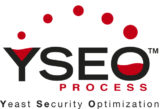
YSEO process: a unique yeast production process
- Improves the yeast cells assimilation of essential micronutrients and vitamins.
- Improves the yeasts ability to implant in the must for a more reliable fermentation.
- Linked to a reduction in yeast stress thereby reducing H2S, VA and SO2 production.
- Shorter lag phase.
- Improves the resistance and adaption of the yeast under difficult fermentation conditions.
Balanced nutrition for a healthy alcoholic fermentation
Nitrogen is an essential nutrient for smooth alcoholic fermentation (AF). Numerous studies have shown that nitrogen has a positive impact on the growth and fermentation activity of yeast (Bell et al. 1979, Ough and Lee 1981, Bezenger and Navarro 1987). Deficiencies in yeast-available nitrogen (YAN) in the must significantly increase the risk of sluggish or stuck fermentations because they can arrest protein synthesis in the yeast cells. We consider a must with an initial sugar level of about 200 g/L to be deficient when its YAN concentration is about 150 mg/L (Henschke and Jiranek 1993). A YAN deficiency in the must can also cause the yeast to increase the production of H2S (Henschke and Jiranek, 1991). This edition of the Winemaking update focuses on the impact of balanced nutrition on alcoholic fermentation.
